#kathleen cleaver
Text
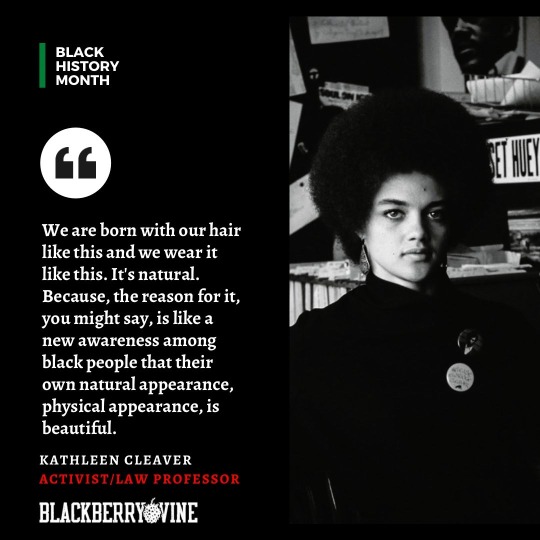
21 notes
·
View notes
Text
Black Panther Party member Kathleen Cleaver on non-violence. [source]
Non-violence is a very non-functional approach in a society that's based entirely on organized force and violence.
A country that was created in violence, land was taken in violence, a society that's perpetuating itself through violence in the ghettos, in Vietnam, in Africa.
Wherever you look, there is organized force and violence at work to maintain this society.
There is a world of difference between 20 million unarmed people, and 20 milion people organized and armed to the gills.
That's Power.
#kathleen cleaver#bpp#black panther party#black pathers#non-violence#video#communism#violence#usa#socialism#organizing
4K notes
·
View notes
Text

Photo by Robert Altman, 1969.
201 notes
·
View notes
Text
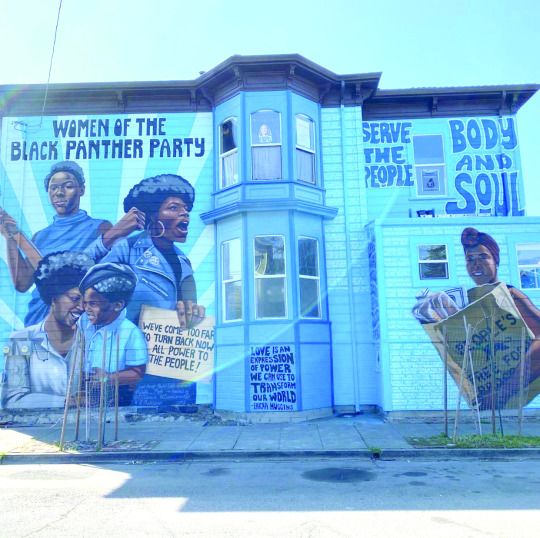
#BLACKPANTHERPARTYOFSELFDEFENSE#BLACK PANTHER PARTY OF SELF DEFENSE#MELANIN#MELANAIRE#BLACK OWNED BUSINESS#OCTOBER 15 1966#BLACKNIFICENT#2pac Shakur#BLACK IS BEAUTIFUL#MELANATED#AFENI SHAKUR#ASSATA SHAKUR#KATHLEEN CLEAVER#JOY DEGRUY#STACY TISDALE#WOMEN OF THE BLACK PANTHER PARTY#BLACK LIBERATION ARMY#FREE THE POLITICAL PRISONERS#AFRICA#marcus garvey#marpessa dawn#madison calley#madam cj walker#lois mailou jones#BLACK FAMILY#BLACK MAN WOMAN AND CHILD#blaxploitation#NZINGA#REPLACE WHITE SUPREMACY#NEELY FULLER JR
75 notes
·
View notes
Text

Kathleen Cleaver, circa 1967
#kathleen cleaver#activist#educator#the black panthers#the black panther party#1967#black history month#black panthers
65 notes
·
View notes
Text
#kathleen cleaver#black history#black tumblr#black literature#black history month#black excellence#educator#civil rights#black history is american history#black community#civil rights movement#black girl magic#blackexcellence365#black lives matter#black pride#beautiful black women#black archives#black americans#equal justice#equal education#equal#equal rights
338 notes
·
View notes
Text
Kathleen Cleaver on hair.
#black panther party#kathleen cleaver#hair#afro#revolutionary#power to the people#black panthers#black liberation#black history#black history month#black is beautiful
225 notes
·
View notes
Text

Kathleen Cleaver with son Maceo in Stockholm, Sweden for Jet Magazine, 1970 🖤🖤🖤🖤
#kathleen cleaver#activist#black panther#1970s style#1970s fashion#1970s vintage#1970s#70s style#70s fashion#70s vintage#70s#vintage 70s#vintage style#vintage fashion#vintage woman#vintage beauty#vintage black women#black woman#black woman beauty#black woman magic#black girl beauty#black girl magic#black beauty#black lady#black activism#black and beautiful#blackgirlsmagic#black girls are beautiful#jet magazine#black woman power
23 notes
·
View notes
Text

14 notes
·
View notes
Text
What we see today in the development of the women's liberation movement is the beginning of the entrance of woman into history, the woman beginning to speak for the woman. The woman beginning to understand, analyze the history of woman; the woman seeking the roots of the source of her oppression in order to be able to deal with this. ....
It's not a personal struggle for the personal liberation of individual women, and it's not a class struggle for the liberation of women in individual classes. It's a struggle to totally alter and rearrange the values and organization of a society that allows women to be forced into a position of submission, a position of secondary significance, a position of dependency, and a position of inferiority vis a vis men that has no concrete, irreversible actual basis in fact.
—Kathleen Cleaver and Julia Herve, The Black Scholar Interviews: Kathleen Cleaver
#kathleen cleaver#womanism#black feminism#feminism#radical feminism#marxist feminism#women's liberation#radblr#patriarchy#capitalism#the black scholar
51 notes
·
View notes
Text
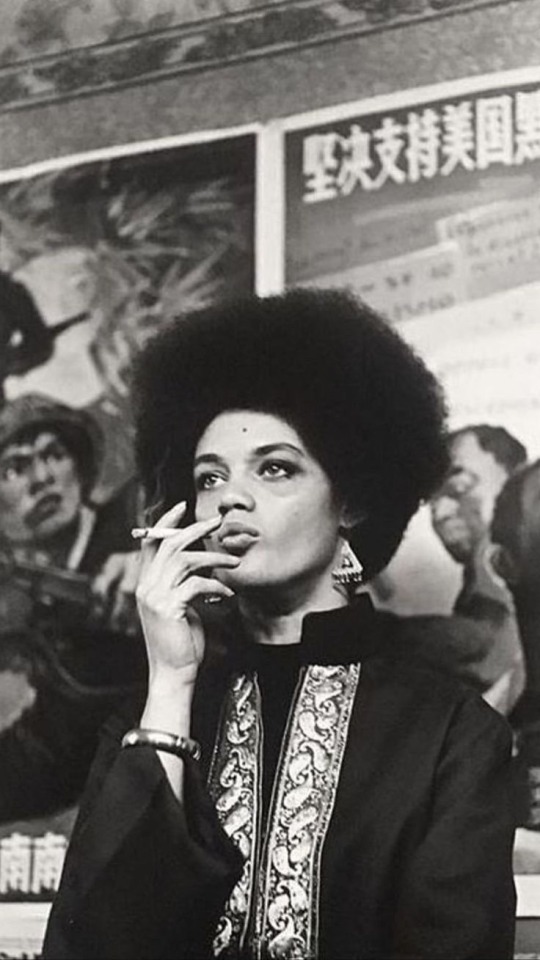
Kathleen Cleaver, leadership in the Black Panther Party
11 notes
·
View notes
Text
Stephen Shames had just turned 20 when he visited the headquarters of the Black Panther party in Oakland, California, and showed some of his recent photographs to Bobby Seale, co-founder and main spokesman for the organisation. Though Shames was still finding his way as a photographer, Seale liked what he saw and decided to use some of the pictures in the Black Panther newspaper. So it was that a young white guy from Cambridge, Massachusetts became the official chronicler of the Black Panthers from 1967 to 1973, documenting their community programmes, protests, rallies, arrests and funerals at close hand.
“The Panthers were never a black nationalist organisation,” says Shames, now 74. “They formed alliances with many black writers and activists and their whole legal team was white. They were not out to get white people, as the American government insisted. They were a revolutionary organisation who worked with anybody they felt was sincerely trying to change the system to benefit poor people and create a more just society.”

Since that time, Shames has published two photobooks about that struggle – The Black Panthers (2006) and Power to the People: the World of the Black Panthers (2016) – as well as several other titles that attest to a life of activism and deep engagement with his subjects. Next month, he will complete his trilogy on that era with a book that, as he puts it, is “long overdue”. Co-authored with former Black Panther Ericka Huggins, who is now a writer and educator, Comrade Sisters: Women of the Black Panther Party is a dynamic visual and oral testament to the crucial role played by women in a revolutionary group whose figureheads, with a few exceptions, were men.
In her foreword to the book, the activist and author Angela Davis points out that 66% of the membership of the Black Panthers was female. She writes: “Because the media tended to focus on what could be easily sensationalised … There has been a tendency to forget that the organising work that truly made the Black Panther Party relevant to a new era of struggle for liberation was largely carried out by women.”

The book is a powerful record of an intense period of grassroots activism and political engagement, a counter-narrative to the one propagated by J Edgar Hoover, the head of the FBI, who called the Panthers “the greatest threat to the internal security of the country”. Like the Black Panther men, the women members tended to look both stylish and dramatic, often sporting afros and at times wearing the black leather jackets and berets that were the Panther uniform. “Most young people are photogenic,” says Shames, “but the Panthers were charismatic. It was something to do with the pride they instilled in their people. Rather than treating them as a problem, as the government did, they gave them a sense of faith and pride and I really think that shines through in the photographs.”
Shames’s extraordinary access allowed him to capture fly-on-the-wall shots of young women at protest rallies, but also carrying out on-the-ground organising of various Black Panther community initiatives, including the Free Breakfast for Children Program, the People’s Free Ambulance Service and the People’s Free Medical Clinics, which offered medical care, including sickle-cell anaemia testing. Though the series is punctuated by images of well-known female members – Kathleen Cleaver (law professor and former communications secretary for the party), Elaine Brown (prison activist, writer and former chair of the party), and the late Afeni Shakur (political activist and mother of rapper Tupac Shakur) – most of the testimonies come from ordinary black women whose youthful engagement with the Black Panthers remains the most empowering moment of their lives.

Carol Henry, who joined the Oakland chapter of the Panthers, recalls: “I joined the BPP when I was 20 years old. I lived in a part of town where the Free Breakfast for School Children Program ran. We got up at 3am; it was a real mission, but it was beautiful. We gave those children a full breakfast every day. Cooking that breakfast was the most memorable part, because everybody got up so early and everybody worked together.” Another woman, Barbara Easley-Cox, who was in the Philadelphia chapter, remembers: “Love is what tied me to the party; it exemplified how I understood love. And that is: you have to love people, to serve them. I was so loved. So blessed on this earth because of my sisters, all of us, who came into the party. It’s lacking today, when I look out on this landscape in America.”
As co-author, Ericka Huggins wrote the introductory essay and tracked down, as she puts it, “the women who were there and whose individual testimonies we could use to evoke how extraordinary that time was for many of us”. Huggins’s own moment of political awakening was seismic. Aged 18, and a student at Lincoln University in Philadelphia, she picked up a copy of the radical leftist magazine Ramparts and saw a photograph of a young black man strapped to a hospital gurney with a bullet wound in his stomach. Next to him, a policeman stood grinning at the camera. On reading the accompanying report, she found out that the young man was Huey P Newton, a co-founder of the party, who had authored the party’s 10-point manifesto with Seale in 1966. “I studied the picture for some time,” she recalled years later, “I didn’t have tears for it, I was so appalled.”

The following day, she left a note for her friend and fellow student John Huggins that read: “I am going to California if I have to walk. I am going to find Huey Newton and work in his defence. Are you coming?”
The pair subsequently drove across the country to Los Angeles, where they joined the local Black Panther chapter, which then comprised around 20 members. They were married soon afterwards and initially worked at whatever task was necessary: answering phones, selling newspapers, writing letters to politicians and talking to potential financial donors. Not long after their arrival in California, they attended the funeral of 17-year-old Bobby Hutton, who had been killed in disputed circumstances during a shoot-out between the Panthers and the Oakland police. “The person waiting in line next to me to pay his respects was Marlon Brando,” says Huggins. “He looked as heartbroken as I felt.”
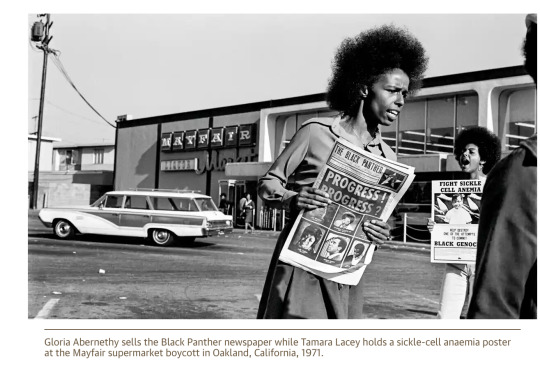
The killing was an augury. In January 1969, her husband, who had become a leader of the Los Angeles Black Panthers, was assassinated on the campus of UCLA by alleged members of a black nationalist group, the US Organization. The killing was thought by many in the black community to be linked to the Cointelpro programme that was being conducted clandestinely and illegally by the FBI against the Black Panthers. In December that year, Black Panthers Fred Hampton and Mark Clark were killed in an FBI-orchestrated raid on Hampton’s apartment.
Widowed with a three-week old daughter, Huggins moved to her husband’s home town of New Haven, Connecticut and, alongside Kathleen Cleaver and Elaine Brown, organised a branch of the Black Panther party there. In 1969, she was arrested alongside Bobby Seale, and charged with murder, kidnapping and conspiracy but, after a lengthy trial, the charges were dismissed in May 1971.

“The word ‘conspiracy’ was used a lot at the time,” she says now, calmly. “We spent time in jail for a murder we did not commit or have anything to do with. The system, then as now, was punitive. We were punished before we even entered the courtroom and their aim was to keep us in prison for ever…”
Did her time in prison dent the sense of optimism and empowerment she had experienced when she joined the Black Panthers? “My optimism was dented by my husband being killed,” she replies, “and by not being able to see my daughter except for a single hour every Saturday. But I chose not to let it break my spirit. When I was in solitary and grieving, I taught myself to meditate in a way that brought me into a deeper focus, so that when I went to court I could be really present. It’s a practice I have kept to this day.”

Huggins insists that her experience was not exceptional and that it “helped me help the women I contacted to tell their stories, because it’s hard sometimes to go back”. Alongside Shames’s powerful images of a moment of black activism that echoes through the decades to this day, those stories evoke a time in which young black women experiencedlifechanging personal empowerment and collective possibility.
“These are not war stories,” says Huggins, who spent 14 years as a Black Panther, making her the longest serving woman in their history. “They are stories of service to humanity. The reason they are so striking, touching and inspiring is because you can sense how beautiful and alive the women were in that moment. Every function of the government that could do harm to us did so, but we kept stepping out and stepping up, because we were giving our communities what had never been given. I think all the women in the book realise that, because they can remember how great they felt back then, what they learned, and what was indelibly imprinted on their minds and in their hearts. The book is our legacy.”
Comrade Sisters: Women of the Black Panther Party by Stephen Shames and Ericka Huggins will be published by ACC Art Books on 9 October. There will also be a book signing and talk on 9 October at Marcus Books in Oakland with the co-authors and special guest Angela Davis, 2-4pm
#Black Panther Party#Stephen Shames#Women in revolutionary organizations#Earlene Coleman#Giving school children a free breakfast started with the black panthers#Ericka Huggins#Comrade Sisters: Women of the Black Panther Party#Kathleen Cleaver#Elaine Brown#afeni shakur#sickle-cell anaemia awareness#May 1971
62 notes
·
View notes
Text
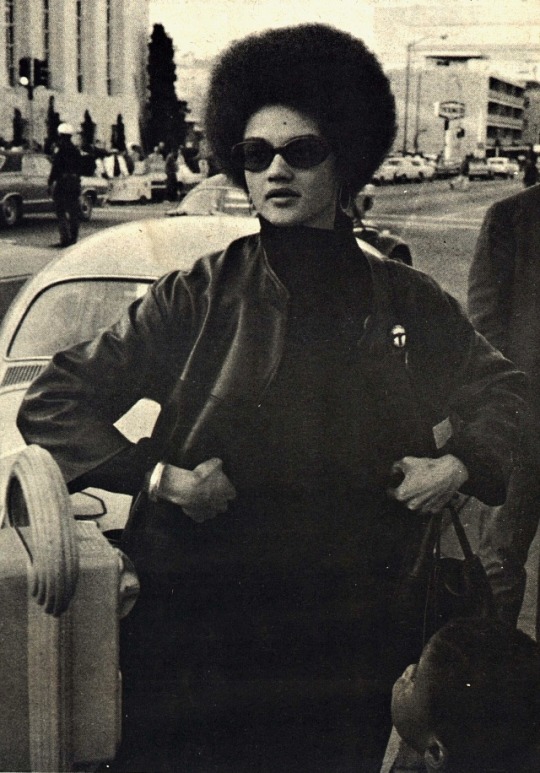
Kathleen Cleaver.
Photo : Terry Reim (1968)
127 notes
·
View notes
Text

October 15 1966
Black Panther Party Of Self Defense
Oakland, California
#black panther party of self defense#blaxploitation#melanin#black family#youtube#2pac shakur#marcus garvey#afeni shakur#assata shakur#ed poindexter#kathleen cleaver#elridge cleaver#sundiata acoli#rosa parks#black wall street#tulsa oklahoma#tulsa 1921#mutulu shakur#victims of white supremacy#free the political prisoners#free the black community#free breakfast program
6 notes
·
View notes
Photo

“You think you can change the cultural hegemony without a revolution….Gimme a break, how do you think you can change the cultural hegemony? Asking for change, petitioning for change, having movies saying if you do this, things will change…No. Revolution just means change but usually it takes a war of some sort to change”.
- Kathleen Cleaver
A Conversation with Kathleen Cleaver 2018 - Zainab Abbas, former member of the Black liberation Front UK (BLF).
20 notes
·
View notes